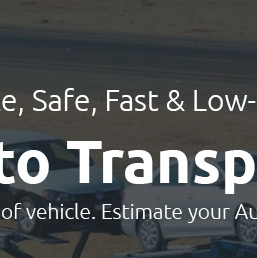 |
|
||||
 |
 |
 |
 |
||
 |
 |
|||||
 |
 |
 |
 |
 |
 |
 |
||
 |
 |
 |
 |
 |
 |
 |
 |
 |
 |
 |
|
 |
The Intricate Journey: How Foreign Cars are Shipped to the U.S.In an increasingly globalized world, the journey of foreign cars to the United States is a fascinating process that combines intricate logistics with stringent regulations. Have you ever wondered about the path your favorite European or Asian automobile takes before it graces American roads? Understanding this journey not only enriches your appreciation for these engineering marvels but also provides insights into the complex web of international trade. Let’s explore this process, noting some common mistakes to avoid, which could be particularly beneficial for importers and enthusiasts alike. Initially, it all begins with the manufacturer, where cars are assembled with precision and passion. Once the assembly line has completed its task, the next step involves preparing these vehicles for their transcontinental voyage. Preparation is key, and this involves ensuring that all vehicles are compliant with U.S. regulations, which can be a labyrinthine task due to the stringent Environmental Protection Agency (EPA) and Department of Transportation (DOT) standards. This is a crucial phase where attention to detail is paramount, as non-compliance can lead to costly delays or rejections at the U.S. port of entry. Once compliance is ensured, the cars are meticulously loaded onto ships. Here, the type of vessel plays a pivotal role. Roll-on/roll-off (RoRo) ships are commonly used for their efficiency in loading vehicles, allowing them to be driven directly onto the ship. Alternatively, container ships offer a higher level of protection, though they come with a higher cost. Choosing the right shipping method is a decision that weighs the balance between cost, safety, and the particular needs of the vehicle. As these ships embark on their transoceanic journey, another critical aspect to consider is weather conditions. Severe weather can pose significant risks, and seasoned importers know that timing shipments to avoid hurricane seasons or winter storms can make a substantial difference. Overlooking this factor is a common mistake that can lead to unnecessary delays or damage. Upon reaching U.S. shores, the customs clearance process begins. This stage is rife with paperwork, and accuracy here is non-negotiable. The Customs and Border Protection (CBP) agency meticulously inspects the documentation and the vehicles themselves, ensuring compliance with all federal regulations. It is often recommended to work with experienced customs brokers who can navigate these complexities efficiently. Missteps in this phase, such as incomplete or incorrect documentation, are frequent pitfalls that can lead to hefty fines or impounded vehicles.
In conclusion, the journey of foreign cars to the United States is a testament to modern logistics and regulatory frameworks. It’s a process that demands meticulous attention to detail and a keen understanding of international and domestic regulations. By avoiding common pitfalls and staying informed about each step, importers can ensure a smooth transition from foreign factories to American driveways, ultimately leading to satisfied customers and thriving businesses. Whether you’re an auto enthusiast or a potential importer, appreciating this journey adds another layer to your understanding of the global automotive industry. https://www.reddit.com/r/cars/comments/16atk0v/importing_a_car_to_the_us_one_persons_experience/
I used All Ways as a customs broker. I sent them electronic copies of all the documentation for the car. As long as the car is at least 25 years ... https://atlanticprojectcargo.com/insights/car-import-to-the-us-everything-you-need-to-know/
To bring your vehicle into the U.S., the owner must organize the shipping process. The first port of entry will handle customs clearance. So it is important ... https://www.capitalone.com/cars/learn/finding-the-right-car/how-to-import-a-car-to-the-united-states/2449
Many of the companies that help you find and pay for vehicles from outside the U.S. are able to handle the shipping and country-of-origin ...
|
